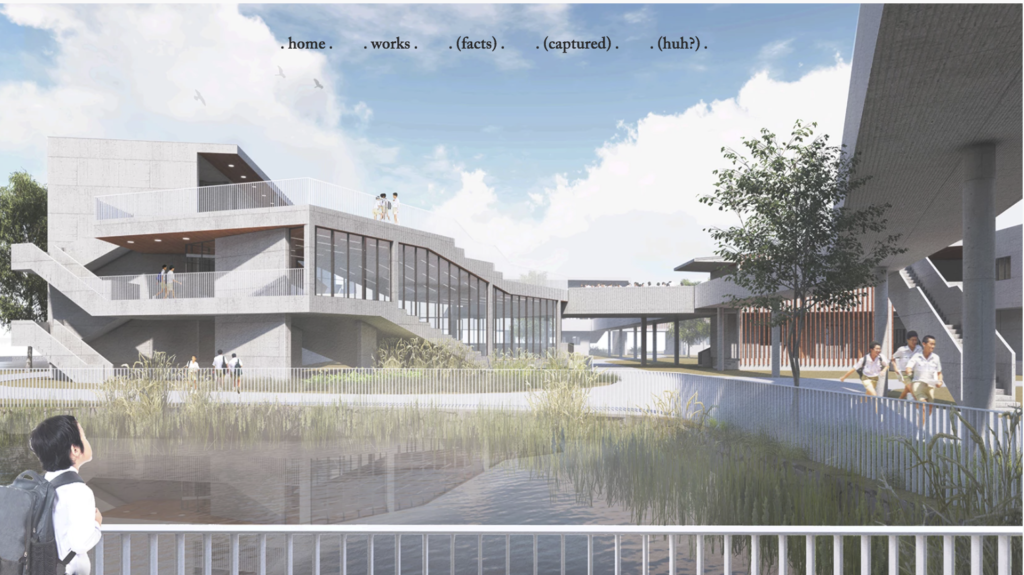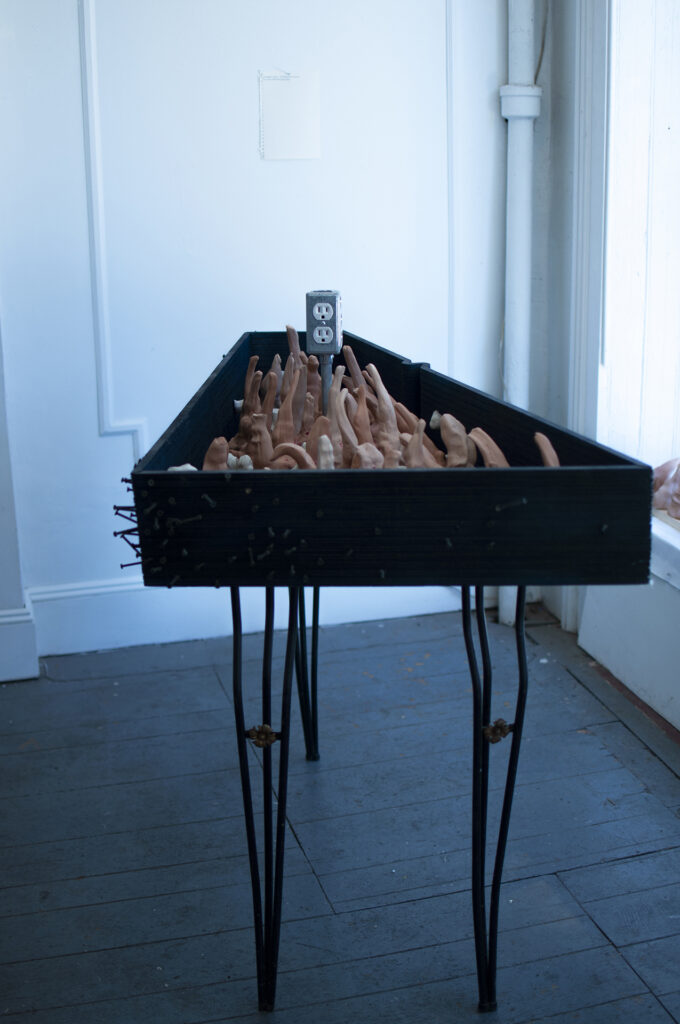Architectural Designer and Artist Paul Mok: Bringing Life to Intention


With a portfolio ranging from a school building and sustainable design projects to his own artistic practice and with lived experiences in Hong Kong, Shanghai, Los Angeles, Tokyo, Boston, and most recently New York, the city-based designer and artist Paul Mok is no stranger to innovation. His most recent exhibit, “A Fountain Head,” was on display at the Art MORA Gallery in New Jersey from August to September and is a testament to how he works: guided by intention, constantly questioning, absorbing, and growing.
Hailing from Hong Kong, Mok relocated to Boston six years ago to pursue a degree in architecture at the Harvard Graduate School of Design. He has remained in the U.S. ever since, exhibiting his work and continuing to build as an artist and designer.
“I was drawn to both psychology and architecture before college. I think I might have picked architecture because I had more confidence in making and drawing than analytical writing,” Mok said. “My twin brother, on the other hand, majored in psychology.”

In 2015, Mok and his former classmate Joe Qiu designed the Edur Primary School in rural China, focused on small-classroom teaching. The school building was completed and opened earlier this year.
“Joe and I were close friends, and we were both ambitious, young designers looking for opportunities to establish our own design practices. When he was approached by the Chinese Education Bureau, we decided to collaborate and came up with a design that would pioneer small-class-teaching in rural China,” Mok said.
Mok and Qiu designed Erdu while they were in grad school together at Harvard, an uncommon feat for young design students to actualize. They assumed that they would co-found an architecture firm together upon graduating. However, Mok quickly realized after graduation that his intention as a designer was much more abstract and open-ended, and he didn’t feel it was right for him to confine himself to therather rigid domain of architecture. He also did not feel that Hong Kong and China in general was the right fit for him. While Qiu moved back to China to found an architecture office, Mok moved to New York.
“Hong Kong has a vibrant art market which is quite different from an art scene. To many people there, art is no different from a decorative commodity. It seems to be a common belief in Hong Kong that the greatest function of art is to decorate the atrium of a shopping mall,” Mok said.

When he first moved to New York after three years of living in Boston, Mok was living in Manhattan and did not have very much space to create the sort of architectural designs he wanted to. Instead, he expanded his drawing practice.
Eventually, Mok’s girlfriend convinced him to try and make something with his hands again, no matter what it was. “I bought some clay from Blick and just started aimlessly sculpting these clay figures,” Mok said. “It all just kind of happened by accident. Even the installation of the figures in a box–that happened simply because I had to move the figures, so I put them in a box to do so, and then I just liked how it looked.”
In the beginning of his design career, Mok was more focused on concept-driven methods, but he has recently been more interested in seemingly unrelated elements, like an outlet in the middle of the aforementioned abstract clay forms, secondhand furniture, and passionately-etched drawings. Quarantine has thrown us all for a loop, and Mok was no exception, but he used his time and resources to explore his work in ways that have inspired him during this perplexing era.
“There have been multiple social and personal crises throughout the past few years. When COVID-19 hit New York City in March, I actually felt like the world had finally ‘caught up’ with my inner turmoil,” Mok said. “It did immediately tangle up with the other predicaments and made everything way worse. But, looking back, the impact that came specifically from COVID was less on the mental level, more on a practical level.”
“Too many good architectures are designed merely through problem-solving and form-finding. I have been slowly expanding on the design methods.”
Paul Mok
As a result of the pandemic, Mok quarantined with his girlfriend for three months. During this period of time, he didn’t have any space or materials to work with whatsoever, nor the time to be completely alone with his ideas. In June, he was able to move back to his basement studio and begin developing concepts once again.
Mok has been working on display designs, experimenting with clay, concrete, fluorescent lighting, conduits, soil, and more. He is also working on a triptych of stroke drawings, similar to those he began when he first moved to New York.
He will also be working for the third time with Worm NY, a Brooklyn-based business that curates ethically-sourced, sustainable arts and goods. Additionally, Mok will exhibit work at Brooklyn’s Artisan Flea Market in October.
Otherwise, Mok is continuing to think about his next architectural moves. “I think there is a design ‘intention’ that I’d like to bring to life,” Mok said. “Too many good architectures are designed merely through problem-solving and form-finding. I have been slowly expanding on the design methods. I hope that soon the ‘intention’ will become clearer, more accurate.”
YOU MIGHT ALSO LIKE
Interventions in Public Space: A Conversation with Allard van Hoorn
From 3D Printed Hitachi Wands to a Site-Specific Show: Banyi Huang on Her Diverse Practice
What's Your Reaction?
Guest Contributor, Cultbytes Fashion assistant at Harper's Bazaar and freelance writer with a seemingly unquenchable thirst for fashion and how it relates to other industries. Engle has a B.A. in Communications and Journalism from California State University-Fullerton. Her work has been published in The OC Weekly, La Habra Journal, Forever Twenty-Something, among others. l instagram l contact l

